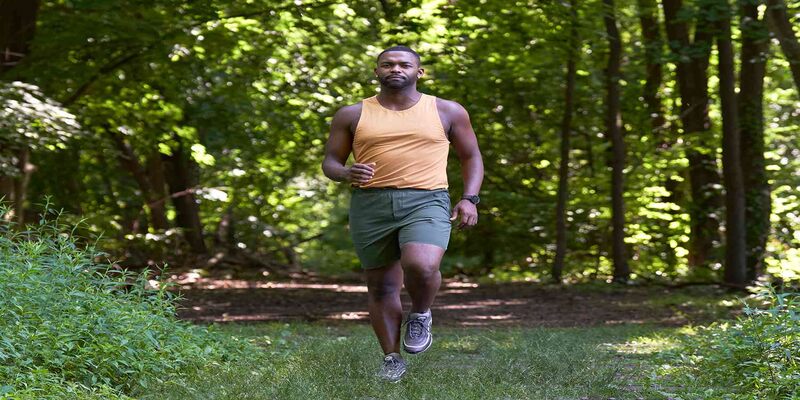For those who want to achieve the goal of a 10k walk, practice the most of running. Once it becomes your habit of walking, you can earn 10k milestones. Novices should follow the guidelines and a structured training plan. This article will give you well-executed instructions and key points to enjoy your first 10k walk. Let's get started.
Essential Prerequisites For Your 10k Walk
Every novice needs to follow the prerequisites to get more accurate results. First of all, choose the right plan for you. Although there are various training plans in the market, select one and consult with your coach or trainer. Beginners should choose a relaxable training plan instead of an aggressive one that gradually strengthens them and builds their endurance. With each day of training in every upcoming week, you will experience how gradually your walking speed and time have been increased. At the beginning of the training plan, walk slowly and wear comfortable shoes to prevent your feet from blistering. After that, increase walking speed and time and start exercising with it.
Avoid Injuries During Training Plan
You must listen to your body's words to build endurance and stamina healthily. In the haste to complete your training plan and compete with others, prevent yourself from injuries. Building a foundation of consistency and dedication is the key to enjoying your first walk.
Physical Preparedness and Building Endurance
Physical preparedness comes with building endurance; both are essential for each other. When you choose your training plan and set your goal of 10k walking, however, the success of it depends on multiple factors. Starting from a short walk, slowly increasing the intensity of speed and time will help you comprehend the condition of your body muscles and joints and the intensity of endurance.

Start Early and Set A Goal for a 10k Walk
Setting a schedule for achieving your goals is much needed, including a specific time to learn walking techniques and posture. Start your training plan 10 to 8 weeks before the event. As a beginner, start with a slow walk-or-run program. You may feel some aches initially. But when your body gets used to it, it increases your time walking and running. When it is sure that your body is fit and capable of long-running, you should increase the intensity of time.
The Test of Mental Resilience
Following a significant training schedule is a test of your mental resilience consistency. Mental resilience is one of the essential prerequisites for success. You can not deny the importance of mental health because it provides discipline and commitment to consistency in training programs. You can tackle any challenge during the training program and offer new ideas with a positive mindset. That would boost your confidence and make you more focused on achieving your goal.
Incorporate Variations In the Training Schedule
Add variations to your training schedule so you won't get bored. If you follow the same training routine, that can cause demotivation. Incorporating a variety of walks like brisk walking, running, interval training, rest, and recovery is an exciting element in the training schedule.
Balancing Rest, Recovery, and Exercise
Beginners must rest because their body is not used to training, so to prevent injuries, burnout, and fatigue, rest plays a vital role in training programs. Once your body gets used to exercise and long-distance walks, you can expand walking or running speed and time without risking burnout and injuries.
 Incorporate Cross Training Activities
Incorporate Cross Training Activities
Cross-training activities are essential for beginners along with all participants. These activities positively impact your progress and enhance your performance at all training plan levels. Vary activities like swimming, biking, and hiking strengthen your overall body and allow you to overcome any challenge of the training plan.
Scrutinizing of Progress
Throughout the training plan, keep scrutinizing your overall performance because if there's any lack of anything, you can overcome it, or if you are overdoing training, you can balance it. Monitor your covered distance, walking speed, and time taken. All of them are minor improvements that pleasantly influence your 10k walking journey.
Focus and Mindful Walking
The success of your training plan demands focus and mindful walking that gives you joy and a sense of accomplishment. Whatever you are doing, whether training or other activities, you need to focus on each step so you can feel and celebrate every moment. Mindful walking can enhance your mental resilience and physical preparedness, and all of these factors increase your endurance, so it is easy for you to increase the intensity of your plans.
Social Engagements or Enlist a Friend
Join a group of walkers or consider incorporating friends to make your routine more organized and disciplined. Participating in social events and sharing your thoughts and experiences with friends can enhance engagement and support systems. Experience all these gives you positive vibes and pushes you to move forward with more commitment and accomplishments to achieve your goals.
Final Thoughts
It would be best to have good food and sleep, a positive mindset, and a well-rested body before the walk or run to get more efficient results. It is essential to warm up your body before starting the run and start the race with a balanced pace. Following the guidance of your trainer and engaging in appropriate training can improve your physical and emotional health and ease the process of completing a 10-kilometer walk.







 Incorporate Cross Training Activities
Incorporate Cross Training Activities